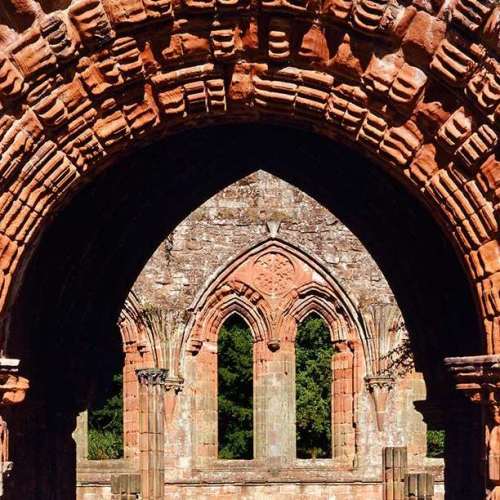A new Timber Staircase has been built at Furness Abbey in Cumbria.
It stands in place of the original staircase within the medieval ruins.
It ahs been almost 900 years since it was first built, and 500 years since it was destroyed during Henry VIII's dissolution of the monasteries, the night staircase has been reinstated. Providing physical access to the monks' dormitory, a part of the abbey never before accessible to visitors, and a platform with striking views.
Reconstructed on the site of the original stairs, the new timber structure meets the surviving stone steps and allows visitors to climb to the first-floor level of the monks' dormitory.
Visitors can now enjoy previously unseen views of the ruins of what was once the largest and wealthiest monastery in north-west England, and a favourite of artist JMW Turner and poet William Wordsworth.
In the dead of night, between midnight and 2am, the monks at Furness Abbey would dutifully rise from their beds in the communal dormitory and descend to the church via their wooden 'night staircase' to sing Matins, an early morning service celebrated during the hours of dark and the first of eight services that punctuated their day.
On descending the steps of this staircase, in the south transept and separate to their 'day staircase' accessed from the cloister, the monks would pass by a statue of St Christopher, strategically located to be the first thing seen every day – the saint's image was thought to provide a protection against a 'bad' death; one with an unconfessed mortal sin which would lead to hell in the afterlife.
Furness Abbey was a place of prayer, piety and pilgrimage, but thanks in part to its holdings as a major landowner, it was also hugely wealthy. This wealth funded the construction of many of the buildings around the cloister and gives an indication of the size of the community in the 13th century. As many as 100 monks and likely twice as many lay brothers would have made up the community.
By the late 18th century, the abbey's red sandstone ruins began to attract the attention of antiquarians, authors and artists.
These included artist JMW Turner, who sat nearby to sketch the abbey, and Ann Radcliffe, the gothic novelist and romancer, who visualised in her mind's eye an ethereal procession of white-clad monks in her travel diary, A Journey Made in the Summer of 1794. William Wordsworth also rhapsodised the abbey in verse and his Guide to the Lakes popularised the ruins as a tourist destination.
As well as the night staircase, Furness Abbey has also received site-wide improvements.
To make more areas of the property accessible, there is now better wheelchair access around the ruins, wider and more level paths, new timber and stone ramps, and steep sections of the landscape have been levelled.
This work has been made possible thanks to a grant of £250,000 from FCC Communities Foundation.


